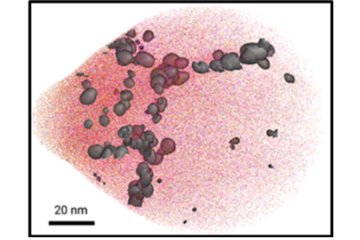All genres
41.
Talk
Segregation Engineering: Confined Phase States at Lattice Defects. Workshop "Recent Progress in Plasticity and Phase Transformations", Bochum, Germany (2015)
42.
Talk
Lath martensite plasticity: A micro-strain mapping study coupled to 3D microstructure characterization. TMS 2015 144th Annual Meeting & Exhibition, Orlando, FL, USA (2015)
43.
Talk
Lath martensite transformation, µ-plasticity and tempering reactions: potential TEM aids. Seminar at Institute of Nanotechnology (INT), Karlsruhe Institute of Technology (KIT), Karlsruhe, Germany (2015)
44.
Talk
Spinodal Decomposition of Fe–Ni–C Martensite by Room Temperature Redistribution of Carbon Investigated by Correlative ECCI/TEM/APT. PTM 2015, Whistler, BC, Canada (2015)
45.
Talk
In-situ characterization of martensite plasticity by high resolution microstructure and strain mapping. ICM12, Karlsruhe, Germany (2015)
46.
Talk
Bulk Nanostructured Steels. Seminar at Ecole Polytechnique Federale de Lausanne (EPFL), Institute of Materials (IMX)
, Lausanne, France (2014)
47.
Talk
Multi-scale characterization of ductile martensitic steels. Advanced Steels 2014, Madrid, Spain (2014)
48.
Talk
Recent Advances in Understanding the Structures and Properties of Nanomaterials. Gordon Research Conference on Structural Nanomaterials, The Chinese University of Hong Kong, Hong Kong, China (2014)
49.
Talk
Accelerated nucleation in nanocrystalline Fe–Si–Nb–B soft-magnetic alloy. ISMANAM 2013, 20th International Symposium on Metastable, Amorphous and Nanostructured Materials, Turin, Italy (2014)
50.
Talk
Nanostructure Manipulation by Segregation Engineering. George Smith Symposium on Atom Probe Tomography, Oxford, UK (2014)
51.
Talk
Nanostructure Manipulation by Segregation Engineering. 2nd ESISM International Workshop on Fundamental Issues of Structural Materials, Kyoto, Japan (2014)
52.
Talk
In-situ characterization of martensite plasticity by high resolution microstructure and microstrain mapping. ICOMAT 2014, International Conference on Martensitic Transformations 2014, Bilbao, Spain (2014)
53.
Poster
Correlative Study of Carbon Segregation in Low Carbon Martensitic Steels by Combined EBSD, ECCI and APT Analysis. MSE 2014, Darmstadt, Germany (2014)
54.
Thesis - PhD
Fundamentals of ferrous low-carbon lath martensite: from the as-quenched, to tempered and deformed states. Dissertation, RWTH Aachen, Aachen, Germany (2017)
55.
Thesis - Master
Nanocrystallization in soft-magnetic Fe-Si-B amorphous alloys / Nanokristallisation in amorphen weichmagnetischen Fe-Si-B-Legierungen. Master, RWTH Aachen / MPIE, Aachen, Germany (2013)
56.
Thesis - Bachelor
(Co,Mg)2SiO4 – Einkristallzüchtung und Charakterisierung. Bachelor, RWTH Aachen, Aachen, Germany (2011)











